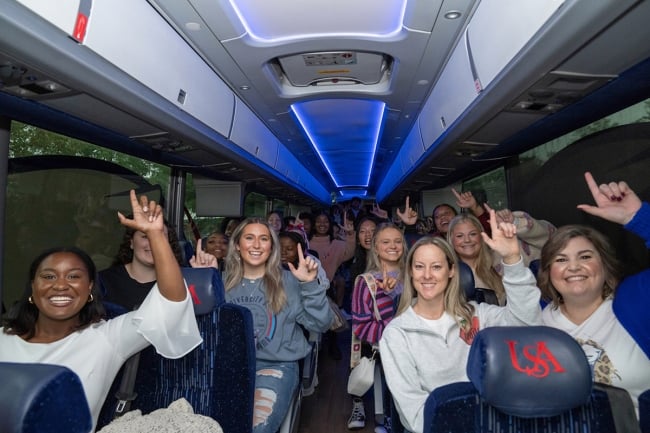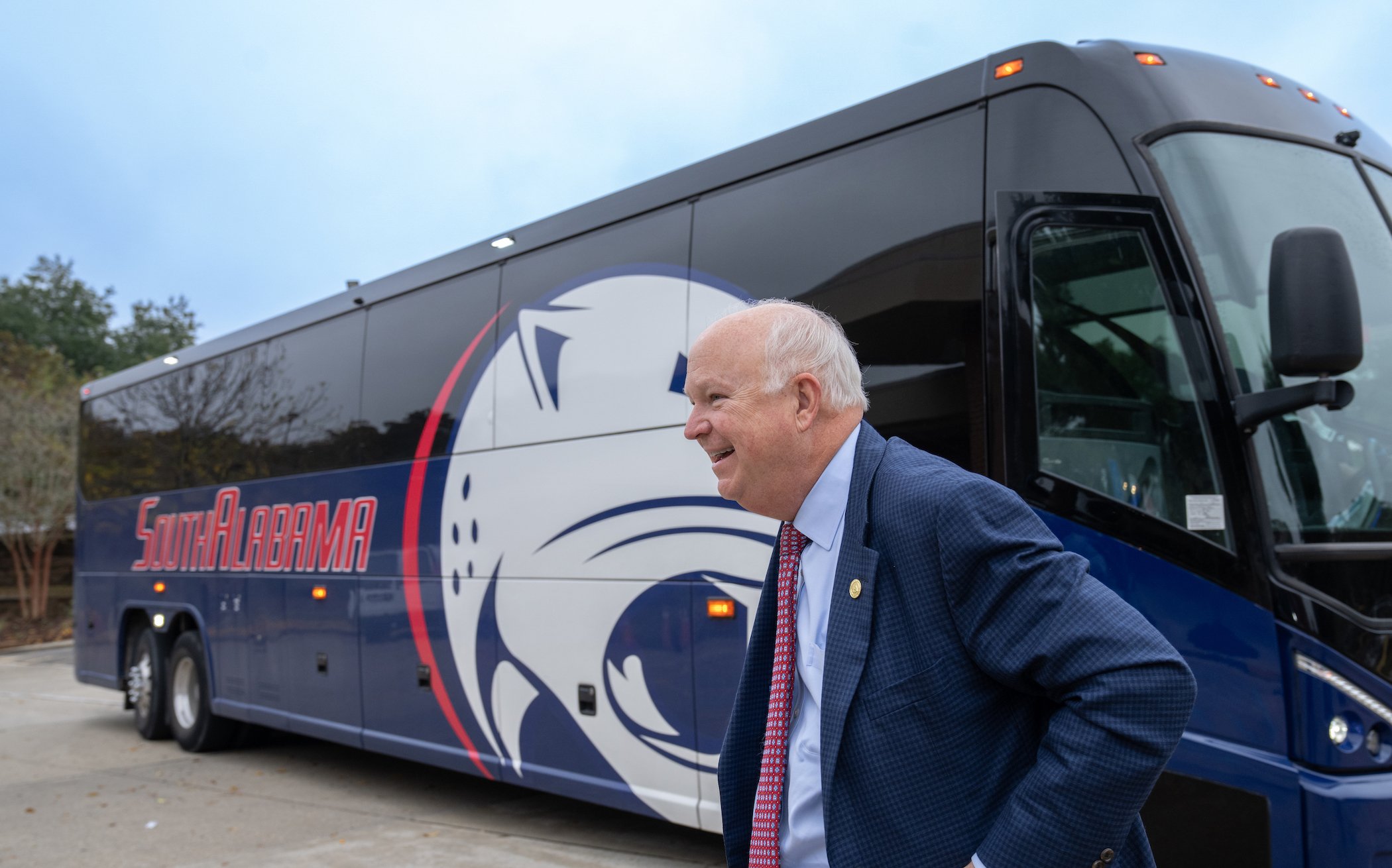You have /5 articles left.
Sign up for a free account or log in.

High school students take a field trip to USA for "Jag Day."
Courtesy of University of South Alabama
When the University of South Alabama busses high school students to campus, the goal is twofold: to spark interest in studying there, yes, but also to build excitement about higher education in general.
“We think there’s a value in demystifying what a college education is all about,” said University of South Alabama (USA) president Josiah Bonner. “There are articles … about, ‘Is a college education still valuable? Does it still bring value for the expense that it costs?’ And one way we believe in helping to answer that question is to allow students to see for themselves that they could find their place on a college campus like ours.”
The new recruitment tactic, known as “Jag Days” in a nod to the college’s jaguar mascot, involves Bonner and Provost Andrea Kent traveling to high schools up to 90 miles from campus, greeting students and administrators, and riding back to USA with a group of students in tow. The visitors then tour the campus, speak with a panel of current students—often alumni of their high school—and, of course, eat a free lunch in the college’s expansive cafeteria.

President Jo Bonner is a popular presence on the bus with prospective recruits.
Courtesy of University of South Alabama
Although it's difficult to accommodate what every student in the group wants to see, the itinerary for each Jag Day varies according to conversations with the principals of the targeted high schools, who tell Bonner and Kent what their students might be most interested in experiencing. A Jag Day might include visits to different academic buildings, chats with faculty and glimpses into the recreation center and dorm rooms.
For some students, Bonner said, the experience resembles going to Disney World for the first time: “It can be overwhelming.” If students are intrigued but don’t have time to see everything they’re interested in, they can return with their family for a more personalized tour.
When a group from the Alabama School of Math and Science, a public boarding school with a focus on STEM disciplines located not far from USA, toured the university, both its principal and USA administrators agreed the students would enjoy seeing the Honors College.
The principal, John Hoyle, said that that was a high point of the tour for his students—as was the face time they got with Bonner himself while on the bus to USA.
“They liked touring the Honors College,” said Hoyle. “Students at my school are very highly motivated, gifted; they go on to be doctors, engineers, college professors, so … it gave them a good sense of, if they went to South Alabama, what it would be like.”
High school groups that tour the Honors College, which enrolls about three percent of USA’s students, have the opportunity to learn about its benefits, which include an exclusive study lounge housed in a 19th century—possibly haunted—church.
“We wanted to be sure that group of students connected with our Honors College dean and they were able to see that facility and some of the fun things,” Kent said.
Personalization and Accessibility
With many higher ed institutions struggling to maintain enrollment, personalized recruitment tactics are becoming increasingly popular, according to Jill Orcutt, the head of the consulting arm of the American Association of Collegiate Registrars and Admissions Officers. Research has shown that generic, rote presentations are less likely to leave an impression on students, she said, stressing that universities can derive the most value from an event like Jag Day if they are able to figure out ahead of time what students want to see and learn about.
That can involve arranging for the high schoolers to meet current students to whom they can relate./p>
“I think any time you can connect them with students from their backgrounds or from their high schools, from their cultural background, it helps them realize there are students just like them,” said Orcutt, adding that she has seen similar strategies around the country—including at the University of California system, where she used to work. “A lot of students don’t have the confidence or [don’t] believe they have the academics to attend college.”
Bussing students to campus can also greatly improve access. Not all students are able to go on college visits, due to transportation limitations or conflicting work, school or other obligations. (Jag Day visits take place during the school day, like any other high school field trip.)
“It’s an opportunity to expose students who might not have an opportunity to visit a campus,” said Orcutt. “The data shows students who tour campus are more likely to not only apply and enroll but consider higher education as an opportunity.”
Hoyle stressed that even though Alabama School of Math and Science is only about 20 minutes from USA, it was valuable for his students, who come from a range of backgrounds and locales across the state, to have the unique opportunity of riding to campus on a bus, accompanied by the college president and provost.
“Access is really important to us. It levels the playing field. Wealthy kids, their parents can pick them up and go anywhere. They can drive anywhere, they can fly anywhere,” he said. “We have brilliant kids and they deserve access to college campuses.”
The school is eagerly awaiting its next Jag Day, slated for the spring.




